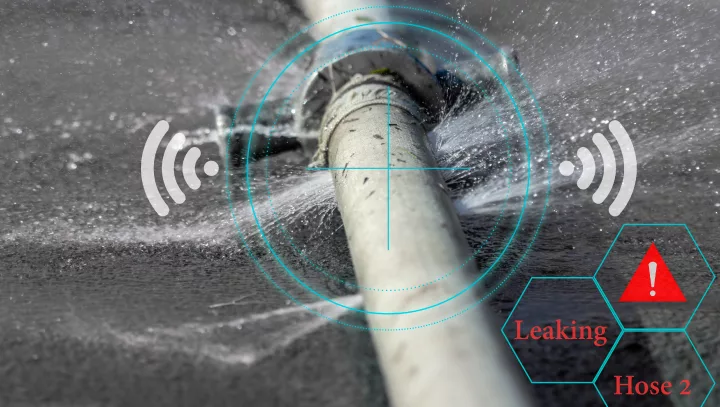Innovative Solutions for Very Early Discovery of Water Leakages in Structures and Framework
As the integrity of buildings and infrastructure is critical, the difficulty of very early discovery of water leakages has stimulated cutting-edge options that promise to reinvent the method we safeguard versus possible problems. From advanced leakage detection technologies to the implementation of IoT sensing units for real-time tracking, the landscape of leak prevention is developing rapidly. Artificial intelligence formulas offer a glance right into the future of leakage forecast, while thermal imaging provides a non-intrusive method for identifying covert leaks. Automated water flow evaluation systems are improving exactly how leakages are identified and addressed, leading the way for a positive technique to water leak discovery. Each of these options holds the essential to making sure the dependability and longevity of our built setting, triggering a change towards a more sustainable and reliable future.
Advanced Leakage Detection Technologies
Advanced leakage detection technologies, outfitted with advanced sensors and formulas, play a critical duty in quickly identifying and determining water leakages in numerous setups. These innovations use a combination of acoustic, thermal, and electromagnetic sensing approaches to detect leaks accurately. Acoustic sensors discover the noise of getting away water, enabling accurate localization of the leak source. Thermal imaging spots temperature changes caused by water leakage, giving one more efficient approach for leak identification. Electromagnetic sensors can identify modifications in magnetic fields triggered by water, using yet an additional layer of leakage detection capacity.

IoT Sensors for Real-Time Surveillance
In the world of modern water leakage discovery, the integration of IoT sensors for real-time monitoring represents a pivotal innovation in improving aggressive leakage discovery capacities. These sensing units offer constant tracking of water supply, providing real-time information on water flow rates, stress variants, and temperature modifications. By leveraging IoT modern technology, these sensing units can identify even the smallest abnormalities in water usage patterns, allowing very early identification of possible leakages prior to they intensify right into significant problems.
IoT sensing units send information to a central system, where advanced formulas assess the information and generate alerts or alerts when abnormalities are discovered. This real-time surveillance ability permits homeowner or facility managers to quickly deal with leaks, lessening water damages, reducing repair service expenses, and saving water sources.
In addition, IoT sensors can be incorporated with structure administration systems, enabling automated reactions to detected leaks, such as shutting down water shutoffs or these details activating pumps to minimize the effect of leakages. On the whole, the implementation of IoT sensors for real-time surveillance substantially improves the performance and effectiveness of water leak detection in buildings and infrastructure.
Artificial Intelligence Algorithms for Leak Prediction

One key advantage of using artificial intelligence for leak forecast is its capacity to continuously find out and enhance its accuracy with time. As even more data is gathered and fed right into the formula, it can fine-tune its predictions and adjust to transforming conditions, inevitably raising the integrity of leakage discovery systems.
In addition, equipment understanding formulas can help in determining subtle signs of leaks that might go unnoticed by typical tracking approaches. water leak detection. By evaluating complex information sets in real-time, these formulas can supply very early cautions and signals, enabling timely intervention and preventive maintenance to minimize possible water damage and connected prices
Making Use Of Thermal Imaging for Leakage Detection
Thermal imaging technology supplies a promising method for identifying water leaks in different systems and facilities. By making use of infrared radiation and temperature variances, thermal imaging cameras can determine concealed leakages that are not easily noticeable to the nude eye.
One of the essential advantages of thermal imaging for leakage discovery is its non-intrusive nature. Overall, the usage of thermal imaging modern technology enhances the performance and precision of water leak discovery, making it an important tool for keeping the integrity of buildings and facilities.
Automated Water Flow Analysis Equipments
Just how can automated water flow analysis systems change the discovery and administration of leaks in different systems and frameworks? Automated water circulation analysis systems supply a positive approach to leak discovery by continuously monitoring water circulation prices and patterns. By establishing baseline information, these systems can swiftly recognize inconsistencies that might show a leak, making it possible for timely intervention to prevent considerable damage.
These company website systems make use of innovative formulas to evaluate real-time information and supply immediate informs when anomalies are identified, permitting quick activity to be taken. In addition, automatic water flow evaluation systems can be incorporated with building monitoring systems or IoT systems, enhancing overall performance and making it possible for remote monitoring capacities.
Moreover, the information accumulated by these systems can be made use of for anticipating maintenance functions, helping to determine possible weak factors in the facilities before leaks occur. Generally, the execution of computerized water flow evaluation systems can considerably enhance leakage detection and administration techniques, eventually resulting in cost financial savings, decreased water wastage, and my company increased sustainability in buildings and framework.

Verdict
To conclude, the assimilation of sophisticated leak discovery innovations, IoT sensing units, machine learning algorithms, thermal imaging, and computerized water flow analysis systems uses cutting-edge options for very early detection of water leakages in structures and framework. These technologies make it possible for real-time monitoring, forecast of leakages, and efficient detection techniques to avoid water damages and waste. Applying these solutions can aid in maintaining the stability and sustainability of water systems in various settings.